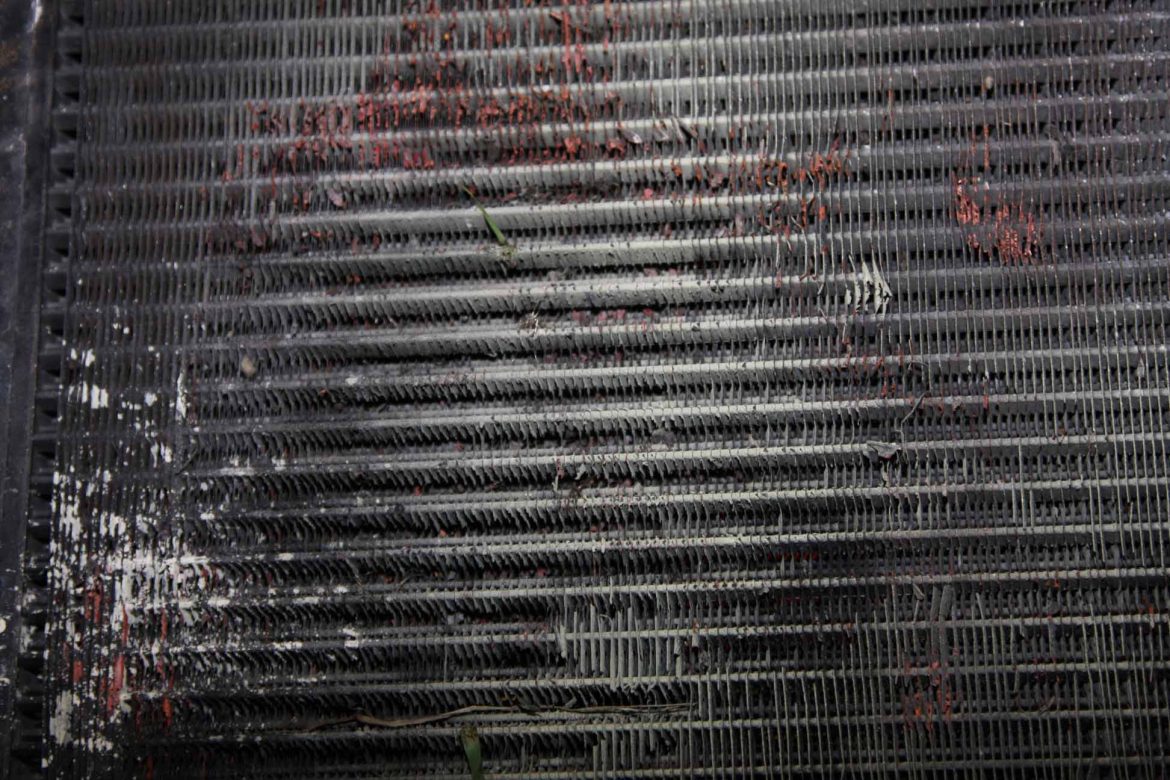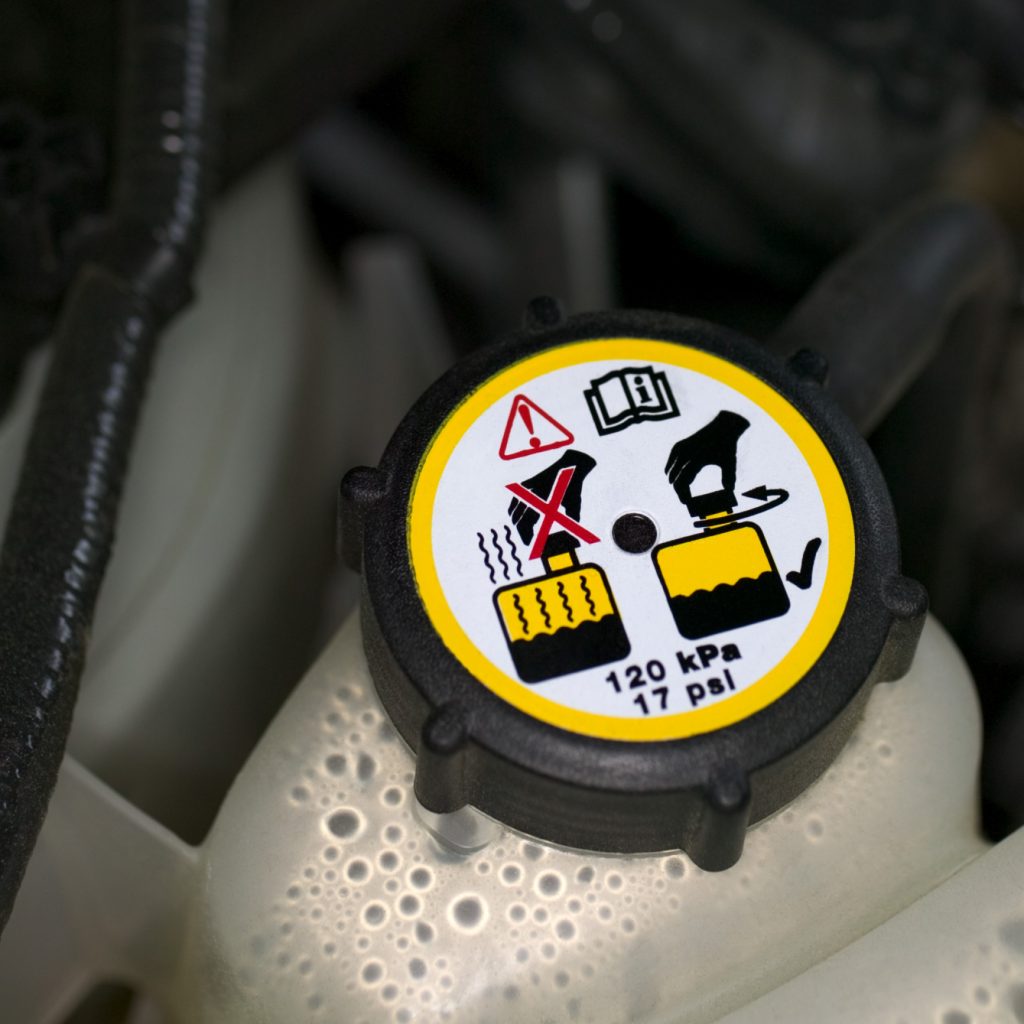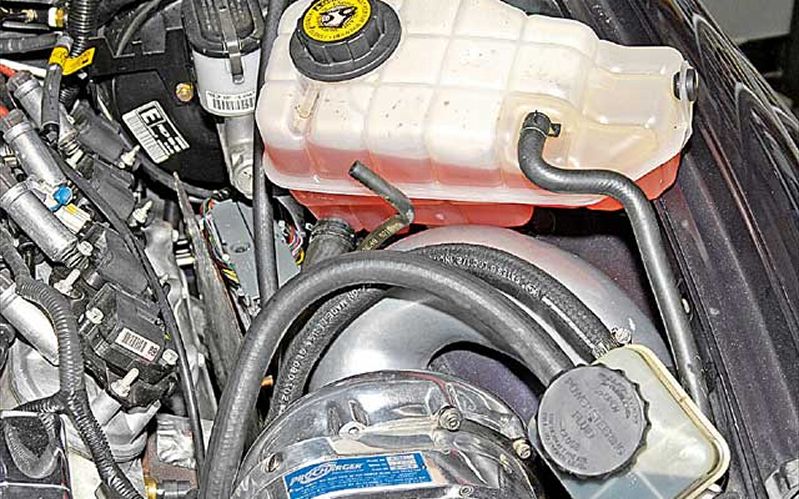Having a leak in your radiator can be a frustrating situation especially if you don’t know how to fix a radiator leak or diagnose the problem. First, finding the leak can be extremely frustrating. I don’t know about you, but if I start to see symptoms of a cooling system leak, the first place I check is not the radiator. Speaking of cooling system leak symptoms, let’s talk through a few to make sure that really is your problem before you go about repairing your radiator leak.
Cooling System Leak Symptoms:
- Coolant forming a puddle on the ground
- Steam coming from under the hood after driving long distances
- Car over heating in traffic or on warm days
- Engine cooling fans running more than usual
- Empty coolant reservoir
- Low coolant in the radiator
Usually, even if you have a slow cooling system leak you will experience many, if not all, of these symptoms. Once you’re confident you have a cooling system leak, the next step is identifying where the coolant is leaking from. Your cooling system uses the water pump attached to the engine to pump coolant from you radiator through your engine block, diverting some of the warm coolant to the heater core in the cabin of your vehicle, then back to the radiator. Coolant has the opportunity to leak from any of the hoses connecting the engine to the radiator and to the heater core. Also, coolant can leak from many of the gaskets in your engine like the water pump gasket, head gaskets, and in some cases the gaskets surrounding the intake manifold. Over time, the heating and cooling cycles can cause these gaskets to deteriorate and start to leak. The hoses connecting all of these components in your vehicle also can start to swell and begin to leak over time. The one place you usually don’t expect to find a leak is in your actual radiator.
 Your radiator is located in the front of your vehicle to maximize its ability to use fresh air to cool the hot coolant coming from your engine. Your radiator is made from metal to enhance its ability to transfer heat from the hot antifreeze to the cool outside air that is flowing over the radiator fins. For a long time cars came with radiators made from copper or brass, or a combination of both. Relatively recently, many automobile manufactures started using all aluminum radiators or a combination of aluminum and plastic. In both cases all radiators have the same basic construction. The actual cooling is done through a small tube with fins on it to aid in cooling. These small tubes are stacked in rows up and down and side by side to maximize the amount of surface area the radiator has to transfer heat. These tubes are all connected together either on each side, or on the top and bottom by end tanks. The end tanks are open passages that the coolant can flow through either in or out of the radiator. It is these end tanks that often are made from plastic, or another metal as most of the heat transfer happens in the tubes.
Your radiator is located in the front of your vehicle to maximize its ability to use fresh air to cool the hot coolant coming from your engine. Your radiator is made from metal to enhance its ability to transfer heat from the hot antifreeze to the cool outside air that is flowing over the radiator fins. For a long time cars came with radiators made from copper or brass, or a combination of both. Relatively recently, many automobile manufactures started using all aluminum radiators or a combination of aluminum and plastic. In both cases all radiators have the same basic construction. The actual cooling is done through a small tube with fins on it to aid in cooling. These small tubes are stacked in rows up and down and side by side to maximize the amount of surface area the radiator has to transfer heat. These tubes are all connected together either on each side, or on the top and bottom by end tanks. The end tanks are open passages that the coolant can flow through either in or out of the radiator. It is these end tanks that often are made from plastic, or another metal as most of the heat transfer happens in the tubes.
Radiator leaks in general have 2 common sources. Since the tubes and fins in your radiator are so small, they can be damaged without a lot of force. A rock from the road, or an accidental poke from a tool or fan blade is usually enough to cause a small break in the tube and a slow leak. The other common source for radiator leaks is at the end tanks. The end tanks are connected to the tubes either by soldering, braising welding or clips. As the radiator heats and cools and vibrates and shakes as your vehicle drives down the road these joints can be loosened and start to crack, break or leak. These leaks can be some of the most difficult to track down because the leaking coolant is so warm it can evaporate quickly and it often can leak onto other components in your vehicle like the radiator support or plastic coverings under your vehicle not leaving any leaks or puddles.
How to Fix a Radiator Leak Rather Than Replacing It
If you have discovered a leak in your radiator, replacing it can be a costly job, including a new radiator and a coolant flush. Rather than spending the time and money on replacing parts in your vehicle it can be much more cost effective to repair the ones already there. You can repair your leaking radiator using BlueDevil Radiator and Block Sealer. BlueDevil Radiator and Block Sealer is a specially formulated leak sealer that when added to your cooling system can seal the leaks in your radiator. BlueDevil Radiator and Block Sealer is a liquid that will stay inert in your cooling system until it reaches a leak point. At the leak, the temperature differential will active BlueDevil Pour-N-Go and cause it to from a chemical weld sealing your leak. BlueDevil Radiator and Block Sealer will form a weld on aluminum, brass, copper or plastic sealing your leak no matter what your radiator is made from.
BlueDevil Products can be found on Amazon.com or at AutoZone, Advance Auto Parts, O’Reilly Auto Parts, NAPA, and other major auto parts retailers.
8 responses to "How to Fix a Radiator Leak"
8 Comments
Leave a Reply
Related Articles




my radiator leaks at the top when filling with water. where do I START?
Brenda-
Please contact our tech support team at 888-863-0426 so that we can get a little more detail about the situation.
Thank You!
-BDP
after buying a car my mechanic showed me a white coloured substance along the rad seam. He said “radiator shows small sign of leak at lower seam” . Dealer mechnic said this was aluminum. Another dealer mechanic just said he didn’t believe there was evidence of a leak?
Comments or suggestions?
Barbara-
Due to the fact that you have been given differing opinions on what is going on with your vehicle we recommend that you have a 3rd mechanic take a look at it for diagnosis. You could potentially use BlueDevil Radiator & Block Sealer (http://store.gobdp.com/radiator-block-sealer-00205/) but it would be a good idea to first confirm there is, in fact, a leak from the radiator.
Feel free to contact us at 888-863-0426 with any questions.
Thank you!
-BDP
I have a 2002 Subaru Forester with a radiator that is a combination of aluminum and plastic. The seam at the top, where the plastic meets the aluminum below, has recently started leaking. It’s pooling in the seam area so I haven’t been able to identify the specific area. It loses about 1 pint of coolant in 30-40 miles of highway driving. Ambient temps are in the 20-30’s. Is Blue Devil Radiator & Block Sealer able to seal a seam leak or the right product for this application?
Eric-
Thank you for asking about your Subaru Forester. Based on your description, you would be a good candidate for the BlueDevil Radiator & Block Sealer. Feel free to contact our technical support line at 888-863-0426 with any other questions.
Thank you!
-BDP
Nicked a radiator fin with a blade cutting a tube and now its leaking you think this would help?
Matthew-
The BlueDevil Radiator & Block Sealer is intended for leaks that are seeping or lightly dripping. As long as you are not losing coolant too quickly, you would be a good candidate for the product.
Thank you!
-BDP